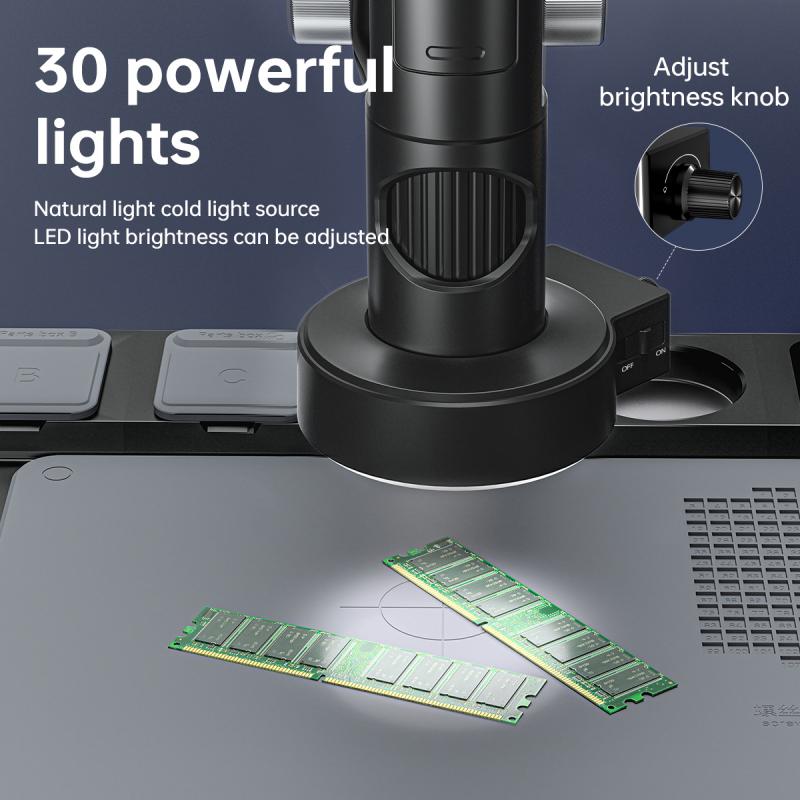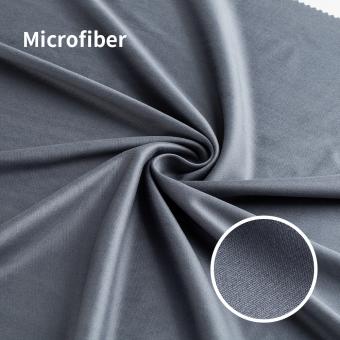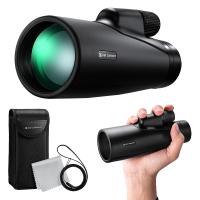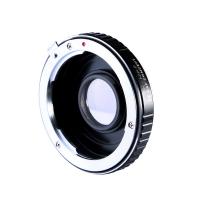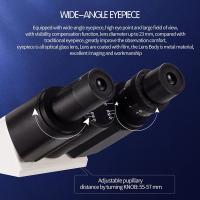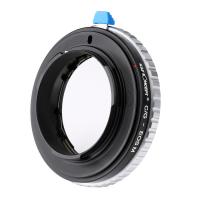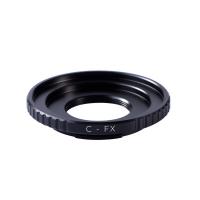What Are The Advantages Of Scanning Electron Microscope ?
The advantages of scanning electron microscopy (SEM) include high resolution imaging, three-dimensional visualization, and the ability to analyze the surface composition of a sample. SEM provides detailed images with magnifications ranging from 10 to 100,000 times, allowing for the examination of fine surface details. The three-dimensional visualization capability of SEM enables the study of surface topography and morphology. Additionally, SEM can provide information about the elemental composition of a sample through energy-dispersive X-ray spectroscopy (EDS), which allows for the identification and mapping of different elements present on the sample's surface. SEM is widely used in various fields such as materials science, biology, geology, and forensics, due to its versatility and ability to provide valuable insights into the microstructure and composition of samples.
1、 High resolution imaging for detailed sample analysis.
The scanning electron microscope (SEM) is a powerful tool used in various scientific fields for high-resolution imaging and detailed sample analysis. One of the main advantages of SEM is its ability to provide extremely detailed images of samples at a much higher resolution compared to other microscopy techniques.
The high resolution imaging capability of SEM allows researchers to observe the surface morphology of samples with great clarity. This is particularly useful in materials science, where the SEM can reveal the microstructure and surface features of materials at a nanoscale level. It enables researchers to study the topography, texture, and composition of materials, which is crucial for understanding their properties and behavior.
Another advantage of SEM is its versatility in sample analysis. SEM can be used to analyze a wide range of samples, including biological specimens, metals, ceramics, polymers, and geological samples. It can provide valuable information about the elemental composition of samples through energy-dispersive X-ray spectroscopy (EDS) analysis. EDS allows researchers to identify and map the distribution of elements within a sample, providing insights into its chemical composition.
Moreover, SEM has the ability to generate three-dimensional images of samples using techniques such as electron tomography. This allows researchers to visualize the internal structure of samples and study their spatial relationships in detail. Three-dimensional imaging is particularly useful in fields like biology and materials science, where understanding the 3D structure of samples is crucial for studying their function and properties.
In recent years, advancements in SEM technology have further enhanced its capabilities. For example, the introduction of field emission SEMs has improved resolution and imaging quality. Additionally, the integration of SEM with other techniques such as focused ion beam (FIB) milling has enabled researchers to perform precise sample preparation and manipulation within the SEM chamber.
In conclusion, the advantages of scanning electron microscopy include high-resolution imaging for detailed sample analysis, versatility in sample analysis, and the ability to generate three-dimensional images. With ongoing advancements in SEM technology, its applications and capabilities continue to expand, making it an indispensable tool in various scientific disciplines.

2、 Ability to study non-conductive samples without additional preparation.
The scanning electron microscope (SEM) is a powerful tool used in various scientific fields for its ability to provide high-resolution images of samples. One of the significant advantages of SEM is its capability to study non-conductive samples without additional preparation.
Traditional microscopes require samples to be conductive or coated with a conductive material to prevent charging and improve image quality. However, SEM overcomes this limitation by utilizing a focused beam of electrons to scan the surface of the sample. This allows for the examination of a wide range of materials, including non-conductive ones such as ceramics, polymers, biological samples, and even insulating materials like glass or minerals.
The ability to study non-conductive samples without additional preparation is particularly advantageous in fields such as materials science, nanotechnology, and biology. It enables researchers to analyze the surface morphology, topography, and composition of various materials without altering their natural state. This is crucial for obtaining accurate and reliable data, as sample preparation can introduce artifacts or alter the properties of the material under investigation.
Moreover, the latest advancements in SEM technology have further enhanced its capabilities. For instance, the introduction of environmental SEM (ESEM) allows for the imaging of samples in their natural, hydrated state. This is particularly useful in biological research, as it enables the observation of living organisms or delicate structures without the need for extensive sample preparation.
In conclusion, the ability of scanning electron microscopes to study non-conductive samples without additional preparation is a significant advantage. It allows for the analysis of a wide range of materials and provides high-resolution images, making SEM an invaluable tool in various scientific disciplines. The continuous advancements in SEM technology further expand its capabilities, enabling researchers to explore new frontiers in their respective fields.

3、 Depth of field allows for 3D imaging and analysis.
The scanning electron microscope (SEM) is a powerful tool used in various scientific fields for imaging and analyzing samples at high magnification. One of the key advantages of SEM is its ability to provide detailed 3D imaging and analysis through its depth of field.
Depth of field refers to the range of distances within a sample that appear in sharp focus. Unlike traditional optical microscopes, SEM uses a focused beam of electrons to scan the surface of a sample, allowing for a much greater depth of field. This means that SEM can capture images with a high level of detail, even on samples with complex topography or uneven surfaces.
The 3D imaging capability of SEM is particularly advantageous in fields such as materials science, biology, and nanotechnology. It allows researchers to visualize and analyze the surface morphology, texture, and topography of samples in great detail. This information is crucial for understanding the structure-function relationships of materials, studying the behavior of biological specimens, and characterizing nanoscale features.
Moreover, SEM can also provide valuable information about the elemental composition of a sample through energy-dispersive X-ray spectroscopy (EDS). EDS is an analytical technique that detects and quantifies the X-rays emitted by the sample when it is bombarded with the electron beam. This allows researchers to identify the chemical elements present in the sample and map their distribution across the surface.
In recent years, advancements in SEM technology have further enhanced its capabilities. For example, the introduction of field emission SEMs has significantly improved resolution and imaging quality. Additionally, the integration of SEM with other techniques such as focused ion beam (FIB) milling has enabled the fabrication and analysis of nanoscale structures in a single instrument.
In conclusion, the depth of field provided by scanning electron microscopes offers numerous advantages for 3D imaging and analysis. It allows researchers to visualize and characterize samples with complex topography, study the behavior of biological specimens, and analyze the elemental composition of materials. With ongoing advancements in SEM technology, its applications and potential for scientific discovery continue to expand.

4、 Capable of elemental analysis using energy-dispersive X-ray spectroscopy.
The scanning electron microscope (SEM) is a powerful tool used in various scientific fields for imaging and analyzing the surface of materials at high magnification. One of the significant advantages of SEM is its capability of elemental analysis using energy-dispersive X-ray spectroscopy (EDS).
EDS is an analytical technique that allows the identification and quantification of elements present in a sample. By bombarding the sample with a focused electron beam, the SEM generates characteristic X-rays from the atoms in the sample. These X-rays are then detected and analyzed to determine the elemental composition of the material. This capability provides valuable information about the chemical composition and distribution of elements within a sample.
The advantages of using EDS in SEM are numerous. Firstly, it allows for the identification of elements present in very small quantities, even down to trace levels. This is particularly useful in materials science, geology, and environmental studies, where the detection of impurities or contaminants is crucial.
Secondly, EDS provides spatial information about the distribution of elements within a sample. By mapping the elemental composition, researchers can gain insights into the structure and composition of materials at a microscopic level. This information is vital in fields such as metallurgy, nanotechnology, and biological sciences.
Furthermore, EDS in SEM is a non-destructive technique, meaning that the sample can be analyzed without altering its structure or composition. This is advantageous when studying delicate or valuable samples that cannot be easily replaced or replicated.
In recent years, advancements in EDS technology have further enhanced its capabilities. Modern EDS detectors offer improved sensitivity, allowing for more accurate and precise elemental analysis. Additionally, the integration of EDS with other techniques, such as electron backscatter diffraction (EBSD), enables simultaneous analysis of both elemental and crystallographic information, providing a more comprehensive understanding of materials.
In conclusion, the ability of SEM to perform elemental analysis using EDS is a significant advantage of this technique. It allows for the identification and quantification of elements, provides spatial information about their distribution, and is non-destructive. With ongoing advancements in EDS technology, the capabilities of SEM continue to expand, making it an indispensable tool in various scientific disciplines.
